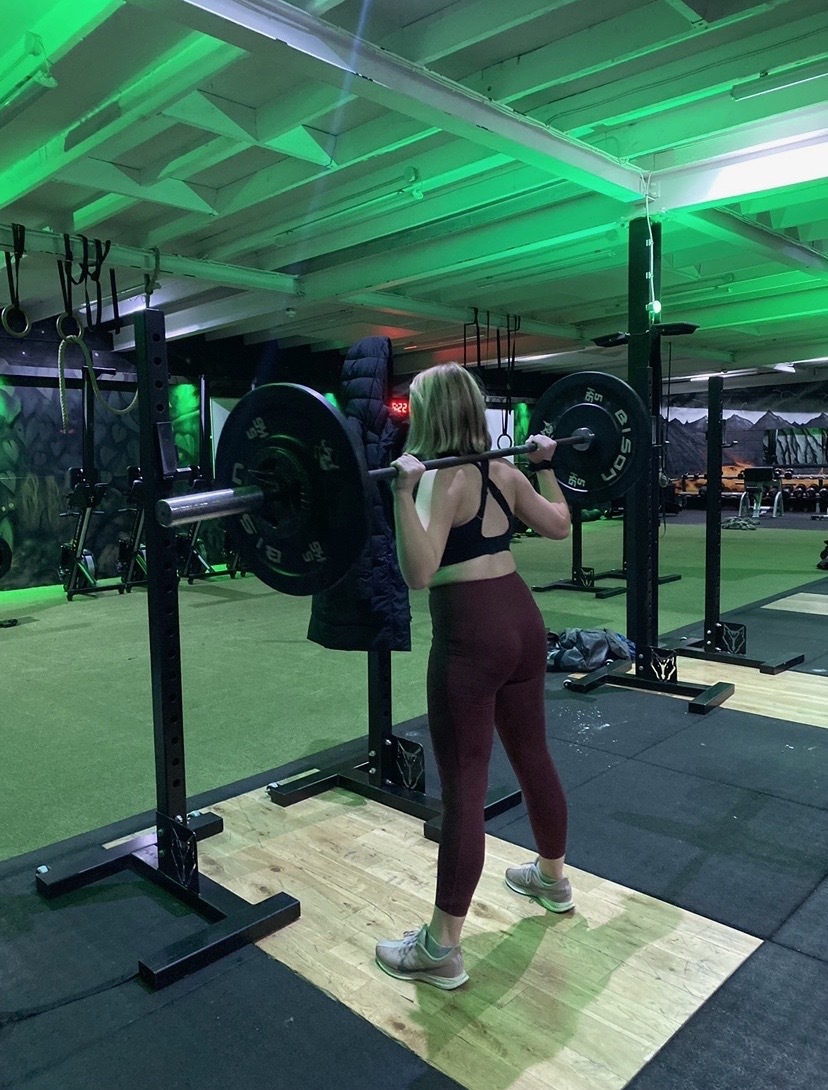I can lift much heavier weights when someone is spotting me so why can’t I lift them when I’m training alone? Apparently, it all comes down to a subconscious fear of failure.
I go to the same gym regularly and I would never have described myself as someone who is anxious about working out. But when I was completing a set of bench presses recently, I began to realise that I was holding onto some subconscious anxiety, particularly when it comes to weightlifting.
I was aiming for six reps but around the fourth, I began to falter, as I felt like I physically couldn’t lift the barbell above my head. I began to take some weight off the bar but the trainer leading the class told me I didn’t need to do that, as he could simply spot me. I looked at him, confused, assuming this wouldn’t make any difference. But to my surprise, with him standing behind me – without assisting with the lift at all – I could easily complete the six reps.
You may also like
Workout anxiety: why do we feel nervous and anxious before a workout or run?
Clearly, the fact I couldn’t do it earlier was not down to my lack of strength or ability but, simply, fear. And, looking into it, I realised this wasn’t a unique experience to me. A study from Edge Hill University found that participants could bench press more reps at a heavier weight when they were being spotted. The research suggests that spotters “support self-efficacy”, making people believe in themselves more, and lowering perceptions of effort.
So what is it that makes us sub-consciously doubt ourselves and our abilities when it comes to difficult movements and activities like weightlifting at the gym? According to Dr Josephine Perry, a chartered sports psychologist, it could be down to the way our brain deals with potential threats. “There’s a part of our brain called the amygdala which looks for physical and physiological threats that could be triggered during exercise,” she says.

Dr Perry continues to explain that there are three parts of our brain:
- The habit zone, which we use when activities come naturally to us.
- The logical zone, which we use when we’re thinking about practical ideas and solutions.
- The amygdala, which we use when we sense some kind of threat.
You may also like
What going back to the gym is really like: from losing strength and confidence to facing harassment
“Ideally, we’ll mostly be in the habit zone in the gym but sometimes we might be in the logical zone too,” she says. “For example, when we decide because we have lifted 29KG, we can probably lift 30KG.”
We move into the amygdala (also known as the threat zone) when our body senses something might harm us, which often happens when we feel stressed or uncomfortable. This might be because you’re not comfortable in the gym, with the people around you or because you’re dealing with stress in life outside of the gym. All of these things could trigger that fear response, which might mean you can’t complete what you perceive to be a difficult movement or lift a heavy weight.
“Your threat response is very useful because it’s what keeps you alive,” Dr Perry says. “However, it’s not helpful when it comes to performance as it can stop us from reaching our full potential.”
The stress response might be particularly sensitive for beginners’, especially those who are joining a new gym and/or trying out new exercises. But it’s also common for seasoned athletes who are dealing with stress in other parts of life or who are dealing with particularly high-pressure environments.
So what can you do if you’re getting in your head in the gym? As research suggests, getting someone to spot you really can be useful. It gives you that extra level of safety which can calm your threat response and, so long as you trust the person spotting you and they’re not putting too much pressure on you, it can be a really helpful technique to help you improve your ability at the gym.
If this doesn’t work or you feel particularly stressed while training, Dr Perry recommends something called colourful breathing. “Normally, we take between 12-13 breaths per minute but when we’re panicked, that can go up to 20-22 breaths per minute,” she says. Our breaths also increase with our heart rate, so exercises like weightlifting which put a lot of stress on the body and increase your heart rate can mirror that feeling of panic.
Colourful breathing is a technique that lowers your pace of breath significantly. “Think of two colours and breathe the first colour in through your nose for five breaths, hold it for two and breathe the other colour out of your mouth for five,” Dr Perry explains. This will reduce your breath count to five to six breaths per minute, which should help you feel more relaxed and put you in a better position to try the difficult movement or heavy weight again.
However, Dr Perry does add that you should only take small steps out of your comfort zone in the gym in order to avoid injury. Sometimes, your threat response may have a legitimate reason to stop you from doing an exercise or lifting a weight so try to listen to your body and find the balance.
Sign up to the Strong Women Training Club today for exclusive workouts and expert tips.
Images: Alice Porter
Source: Read Full Article
